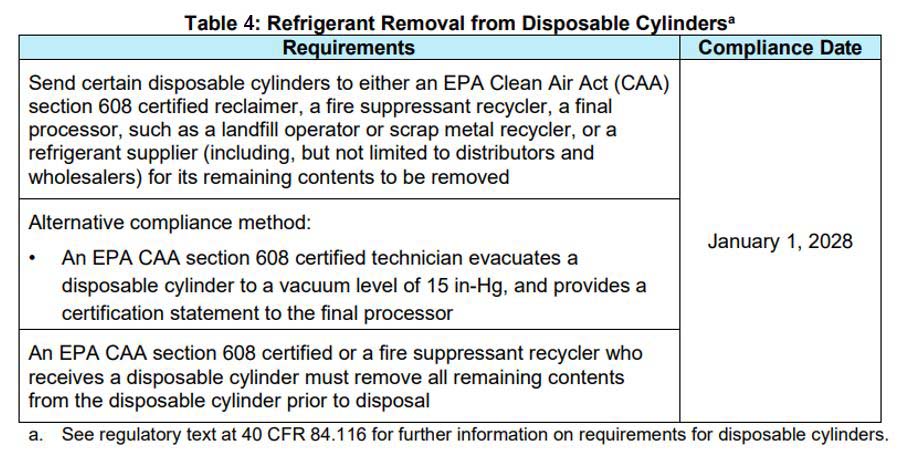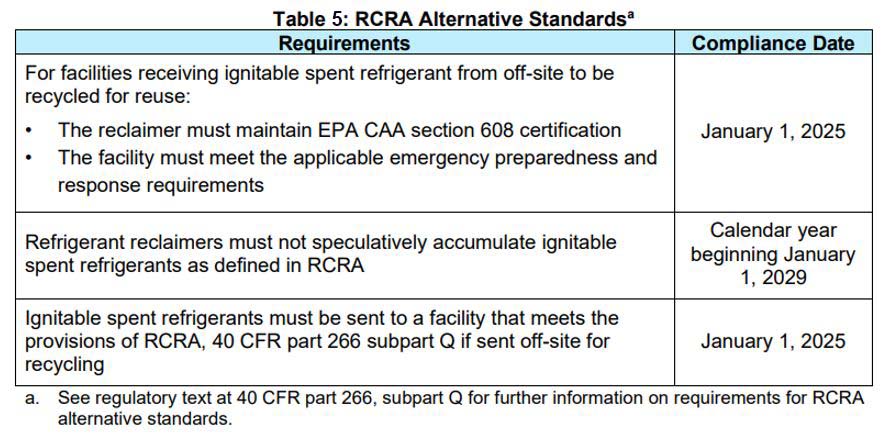The U.S. Environmental Protection Agency (EPA) recently announced a final rule to establish a new program to better manage, recycle, and reuse HFCs under the AIM Act. This is the third component of the AIM Act, which mandates that EPA reduce the production and usage of HFCs by 85% by 2036.
The first component of the Act involved creating a framework for the phasedown and allocation of HFC allowances for imports and production. The second component mandated the transition to lower-GWP alternatives and products and equipment through sector-based restrictions under subsection (i) of the AIM Act, entitled “Technology Transitions.” The third component focuses on the “Management of Regulated Substances,” which falls under subsection (h) of the AIM Act.
This first final rule of subsection (h) establishes the Emissions Reduction and Reclamation (ER&R) program for the management of certain HFCs and their substitutes, including certain provisions that apply to both new and existing equipment. The ER&R program includes requirements and compliance dates for repairing leaking equipment (see Table 1, below); the installation and use of automatic leak detection systems on large refrigeration systems (see Table 2, below); using reclaimed HFCs to service certain existing equipment (see Table 3, below); and removal of HFCs from disposable cylinders before they are discarded (see Table 4, below). According to the EPA, these provisions do not generally require consumers to stop using or servicing their existing equipment.
The regulations also establish a standard that limits the amount of new, or virgin, HFCs that can be contained in reclaimed HFC refrigerants. Additionally, the EPA is establishing alternative standards under the Resource Conservation and Recovery Act (RCRA) for ignitable spent refrigerants when recycled for reuse (see Table 5, below).
It is important to note that the final rule does not address technician training, though EPA is seeking information on approaches for establishing requirements for technician training and/or certification. The rule also does not include provisions for tracking HFC containers that could be used in the servicing, repair, and/or installation of refrigerant-containing equipment. In addition, the rule does not finalize provisions requiring the initial installation of refrigerant-containing equipment in certain subsectors in the refrigeration and air conditioning/heat pump sector to be done with reclaimed refrigerant where HFCs or a blend containing HFCs are used. EPA intends to further consider those provisions and the comments submitted on the proposed requirements before determining how to proceed.
EPA estimates that in addition to the benefits from prior HFC actions, from 2026 through 2050, this rule will provide additional cumulative greenhouse gas emissions reductions of approximately 120 million metric tons of carbon dioxide equivalent, an incremental net benefit of at least $6.9 billion.
“In AHRI’s view, this final rule, which is an important part of the ongoing transition from HFCs to next-generation refrigerants, is the first, but important, step in refrigerant management policy for the HFC transition,” said Stephen Yurek, president and CEO of AHRI.
All tables courtesy of the EPA.












